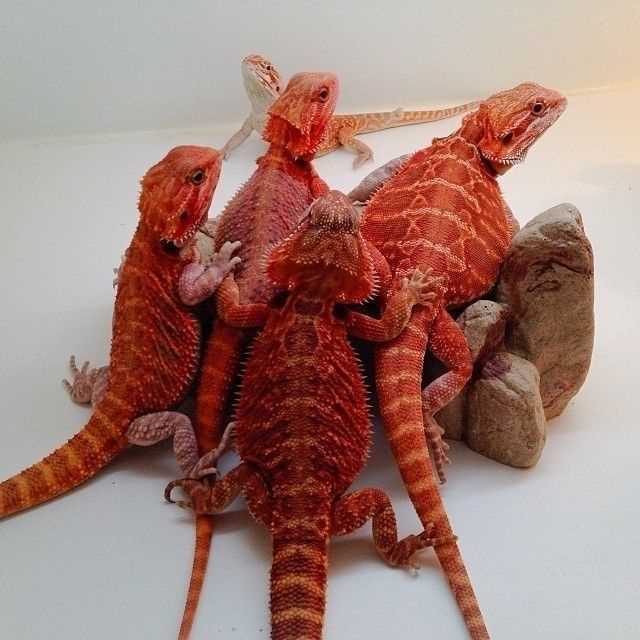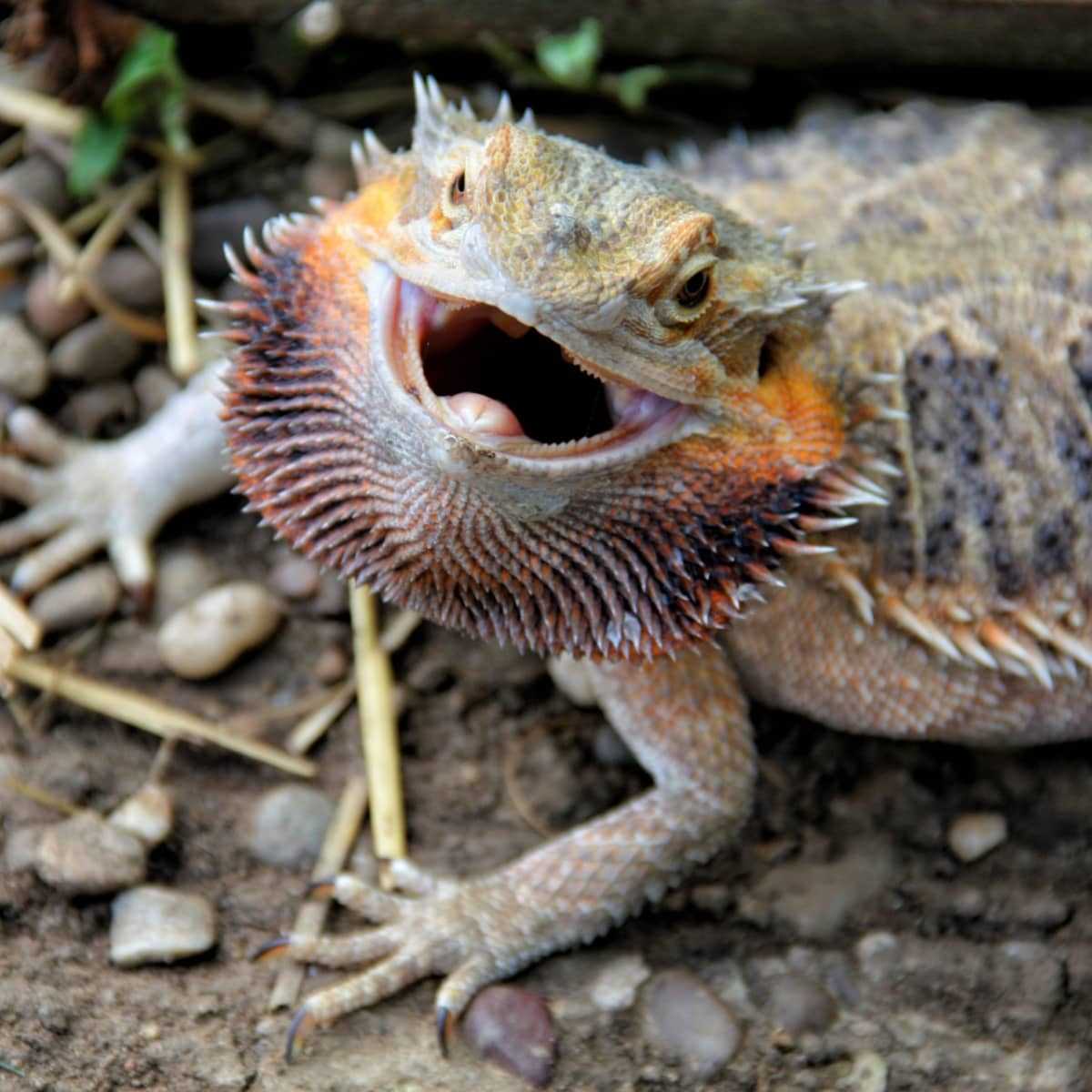As an adult fancy bearded dragon owner, you’ll have the pleasure of watching your dragon grow from a cute baby into a magnificent adult. With proper care and attention, these dragons can reach an impressive size, making them a truly awe-inspiring sight.
Choosing Your Adult Fancy Bearded Dragon
Another important factor to consider is the temperament of the dragon. Some adult fancy bearded dragons may be more laid-back and tolerate handling, while others may be more skittish or aggressive. If possible, spend some time observing the dragon’s behavior before making your decision. Look for a dragon that is alert, active, and has a calm demeanor.
| Factors to Consider: |
|
|---|
By considering these factors, you can ensure that you choose the right adult fancy bearded dragon for your needs. Remember, these dragons can live for several years, so take your time and make an informed decision. With the right dragon, you can enjoy a rewarding and fascinating reptile ownership experience.
Setting Up the Perfect Habitat for Your Adult Fancy Bearded Dragon
Creating a suitable habitat for your adult fancy bearded dragon is essential to ensure their overall health and well-being. By replicating their natural environment, you can provide them with a comfortable and stimulating space to thrive in. Here are some important aspects to consider when setting up the perfect habitat for your adult fancy bearded dragon:
1. Enclosure
2. Substrate

3. Temperature and Lighting

Proper temperature and lighting are crucial for the health of your adult fancy bearded dragon. Provide a warm basking spot with a temperature of around 95-100°F (35-38°C) during the day. The ambient temperature in the rest of the enclosure should be maintained around 80-85°F (27-29°C). Use a combination of heat lamps and UVB bulbs to ensure both warmth and essential UVB radiation for vitamin D synthesis.
4. Decor and Hiding Spots
Your adult fancy bearded dragon will appreciate a variety of decor and hiding spots in their habitat. Incorporate branches, rocks, and artificial plants for climbing and perching. Create multiple hiding spots using reptile caves or log hides. This will allow your dragon to exhibit natural behaviors and feel secure in their enclosure.
5. Feeding and Water
Place food and water dishes in easily accessible locations within the enclosure. Provide a shallow dish for drinking water and a separate dish for feeding. Your adult fancy bearded dragon’s diet should consist of a variety of insects, leafy greens, and vegetables. Offer fresh food daily and ensure a balanced diet to meet their nutritional needs.
Remember to clean and sanitize the habitat regularly to maintain proper hygiene and prevent the buildup of bacteria. Monitor the temperature and humidity levels regularly to ensure they are within the appropriate range. By setting up the perfect habitat for your adult fancy bearded dragon, you will create an environment where they can thrive and live a healthy and happy life.
Feeding and Nutrition for Adult Fancy Bearded Dragons

Proper feeding and nutrition are crucial for the health and well-being of adult fancy bearded dragons. These reptiles have specific dietary requirements that must be met to ensure their overall development and longevity.
Dietary Requirements
Leafy greens and vegetables should make up approximately 20-30% of their diet. These can include kale, collard greens, mustard greens, dandelion greens, and butternut squash. These vegetables provide essential vitamins and minerals necessary for their overall well-being.
Occasional fruits, such as papaya, mango, and berries, can be offered as treats but should not exceed 10% of their diet. These fruits provide additional nutrients and variety to their diet.
Feeding Schedule
Supplementation
Adult fancy bearded dragons require proper supplementation to ensure they receive all the necessary vitamins and minerals. A calcium supplement with vitamin D3 should be dusted onto their insects at least three times a week. This is important for their bone health and preventing metabolic bone disease.
A multivitamin supplement should be used once or twice a week to ensure they receive all the necessary vitamins and minerals that may be lacking in their regular diet.
Water
Disclaimer:
Health and Wellness Tips for Your Adult Fancy Bearded Dragon
Keeping your adult fancy bearded dragon in good health is essential for their overall well-being and longevity. Here are some important tips to help you maintain a healthy and happy dragon:
1. Regular Veterinary Check-ups: It’s crucial to schedule regular visits to a reptile veterinarian who specializes in bearded dragons. They can perform routine health checks, check for any signs of illness, and provide necessary vaccinations.
2. Proper Diet: A balanced and nutritious diet is vital for your adult fancy bearded dragon’s health. Provide a variety of well-washed vegetables like kale, collard greens, and squash, as well as insects like crickets and mealworms. Dust the food with calcium and vitamin supplements to ensure your dragon gets all the necessary nutrients.
3. Hydration: Always make sure your bearded dragon has access to fresh and clean water. They should be able to easily drink from a shallow dish. Additionally, you can mist their habitat to increase humidity levels, which will help with shedding.
4. Temperature and Lighting: Bearded dragons require specific temperature and lighting conditions to thrive. Provide a basking spot with a temperature of around 95-105°F (35-40°C), as well as a cooler area between 75-85°F (24-29°C). Use a full-spectrum UVB light to ensure proper calcium absorption and mimic natural sunlight.
5. Clean and Spacious Habitat: Regularly clean your dragon’s enclosure to maintain a hygienic environment. Remove feces, uneaten food, and any debris. Ensure the substrate is not hazardous and avoid using loose particles that can be ingested by your dragon. Provide hiding spots, climbing branches, and a spacious area for exercise.
6. Regular Exercise: Allow your adult fancy bearded dragon to explore outside their enclosure under supervision. This will provide them with exercise and mental stimulation. Just ensure the environment is safe and secure, free from potential dangers.
8. Limit Stress: Avoid overcrowding your dragon’s habitat or causing unnecessary stress. Bearded dragons are solitary animals and prefer their personal space. Limit handling to reduce stress levels, especially during the first few weeks of ownership or when they are shedding.
By following these health and wellness tips, you’ll be able to provide the best care for your adult fancy bearded dragon and ensure they live a long, happy, and healthy life.
Handling and Taming Your Adult Fancy Bearded Dragon
Before attempting to handle your dragon, make sure to wash your hands thoroughly to remove any lingering scents that may startle or stress them. It’s also important to handle them in a calm and quiet environment to minimize any potential stress.
Start by slowly approaching your dragon and allowing them to become familiar with your presence. You can do this by sitting near their enclosure and speaking to them softly. Over time, your dragon will become more comfortable with you being around.
When you feel that your dragon is ready to be handled, approach them from the side rather than from above, as this can be perceived as a threat. Gently scoop them up with both hands, supporting their body and legs to keep them secure.
While holding your dragon, avoid making sudden movements or loud noises that could startle them. Instead, speak to them in a calm and soothing voice to help them feel relaxed. If your dragon becomes agitated or displays signs of stress, such as puffing up their beard or hissing, gently place them back in their enclosure and try again later.
Remember, each bearded dragon is unique, and it may take some time for them to become fully tame. Be patient, consistent, and always prioritize the well-being and comfort of your dragon. With time and effort, you can develop a strong bond with your adult fancy bearded dragon.
Disclaimer: This article is for informational purposes only. It is not intended to be a substitute for professional advice, diagnosis, or treatment. Always consult your veterinarian or reptile expert for specific advice regarding the care and handling of your adult bearded dragon.
Common Behaviors and Characteristics of Adult Fancy Bearded Dragons
Adult fancy bearded dragons are also known for their basking habits. They require a heat source to regulate their body temperature, and you’ll often find them perched under a basking lamp or heat rock. This behavior is essential for their overall health and helps them digest food properly.
Besides their behavior, adult fancy bearded dragons have some unique physical characteristics. They have spiny scales along their back and tail, which give them their bearded appearance. These scales can change color, especially when the dragon is experiencing different moods or temperatures.
| Common Behaviors | Physical Characteristics |
|---|---|
| Head bobbing | Spiny scales |
| Arm waving | Color-changing scales |
| Basking habits | |
| Calm and docile nature |
Breeding and Reproduction of Adult Fancy Bearded Dragons
| Factors to Consider | Description |
|---|---|
| Temperature and Lighting | Creating the right environment with proper temperature and lighting is crucial for successful breeding. Bearded dragons require a temperature gradient, with a warm basking area and cooler side for thermoregulation. |
| Mating | Introduce the male and female dragons in a separate breeding enclosure. Monitor their behavior and ensure the male is not too aggressive towards the female. If they show signs of aggression, separate them immediately. |
| Egg Laying | Female bearded dragons will usually lay their eggs within a few weeks after mating. Provide a suitable nesting box filled with a mixture of sand and soil for the female to lay her eggs. It is crucial to maintain proper humidity levels to ensure the eggs develop properly. |
| Egg Incubation | Once the eggs are laid, carefully remove them from the nesting box and place them in an incubator set at the appropriate temperature and humidity levels. Regularly monitor the eggs and make sure they are not exposed to extreme temperature fluctuations. |
| Hatchling Care |

I’m Lena Adams—a product of an unconventional upbringing in the African wilderness. My father, a daring explorer of African wildlife, sparked my fascination with reptiles, a passion that intertwined with the tragic loss of my mother during an expedition, leaving an indelible mark on my life. Driven to understand the creatures that captivated my parents, I embarked on my journey, sharing insights about reptiles, frogs, and lizards on my website. Through my explorations and conservation efforts, I honour my family’s legacy while seeking connections—to the creatures, nature, and the mother whose presence I yearn to understand.
